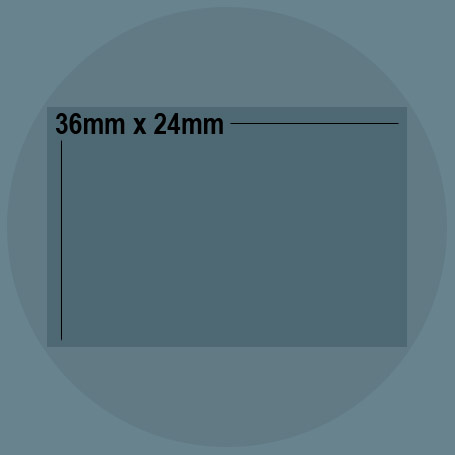
| Home • Reviews • Forums • News 2015 • 2013 • 2012 • 2009 • 2008 • 2007 • 2006 • 2005 • 2004 RSS Feeds • FOV Factor Table • Sensor Sizes | Definitions: A-D • E-H • I-L • M-P • Q-U • V-Z | Sitemap Articles • Archived Websites (Pre-DigitalDingus): D100 Lounge • E-10 Club | Contact |
| The Field Of View Equivalency Factor "The FOV Thing" |
|
| Introduction December 26, 2004 |
|
| FOVEF: Introduction • FOVEF: Image Circles FOVEF: Olympus Four-Thirds Lenses • FOVEF: Nikon DX Lenses • FOVEF: How Do You Get That Number? FOVEF: Degrees and Angles Of View • FOVEF: Conclusion
|
|
| The debate over having a FF (Full-Frame) CCD versus a CCD with a magnification factor, is still a topic that stirs a little controversy from camera owners...ok, actually, it causes a lot of heated debates on photography forums. There is also a debate on what to properly call this magnification factor. Is it a crop? Is it a multiplier? Well, it depends, because camera manufacturers are introducing new lenses and new sensors of different sizes, which confuse the subject. However, start thinking about this in terms of a focal length equivalency factor, rather than an actual crop. Before We Begin Before we start getting into numbers and diagrams, a few notes need to be made. I am using pixels representing millimeters. For example, an imager that is 23.7mm wide, and 15.6mm high, will be expressed in a diagram that is 237 pixels wide, and 156 pixels high. Comparatively, a 35mm image size will be expressed as 360 pixels wide and 240 pixels high. In this way, you can see the illustrations, as well as the graphics being in exact proportion to each other and imagers which are being compared. What Will Be Discussed In This Article Inevitably, when we talk about FOV Crops and Equivalency Factors, lenses and their Image Circles will come into to the discussion. Because of the relationship, we will be discussing: Page 1 - Introduction to FOVEF Page 2 - Image Circles, 35mm, Nikon, and actual FOV Cropping Page 3 - Image Circles, 35mm, Olympus, and FOV Equivalency replacing actual FOV Cropping Page 4 - Image Circles, 35mm, Nikon DX lenses, and FOV Equivalency replacing actual FOV Cropping Page 5 - How we obtain the FOV Equivalency Factor number Page 6 - Angle Of View / Degrees Page 7 - FOVEF vs. FOV Crop table / Conclusion Pages 3 and 4 are very important, because no actualy physical cropping is occurring. Rather, a Field Of View Equivalency Factor is now in place, because of a smaller image circle. Introduction To FOVEF The FOV Crop / Multiplier Effect Wouldn't it be nice if all cameras were made equally? Well, this just isn't going to happen anytime soon, and we have technology to blame! When the digital camera became available, it brought along a few terms that all come down to how a photo looks like to you, as you view it. FOV, X-Factor, Multiplier Effect, Magnification Factor, Effective Focal Length, FOVEF, all of these mean the digital camera has a particular viewing ratio that make your photos look different when in comparison to a standard 35mm camera or any other camera format for that matter (like Medium Format). Digital cameras have an imager that replaces the film in a camera, and in turn, becomes an infinite "virtual" film device. This is why everyone loves digital cameras so much, and why they have become so popular with any age group or skill. You can take a photo of something and if you don't like the way it turned out, you can simply hit the delete button on the camera, and start again. Another benefit, such as having to send your negatives away to be processed at outrageous prices, is a thing of past. If you own a digital camera today, you now have the option to have a processing lab develop and print only the photos you select. With the FOV Crop in digital cameras, you can also print photos that appear as if they were made a longer focal length lens...and here is where we begin our journey into understanding the effect of a smaller imager when compared to a larger one. When we discuss a multiplier effect, or more precisely, a focal length equivalency factor: FOVEF, we are using a theoretical comparison between a digital camera's imager which has less area than a 35mm camera's imaging area. Since the digital camera's imager is smaller, the appearance of a magnification or increased focal length, will occur. Due note that FOV Factors can be obtained from any two different-sized imagers because this is all a "factor" really is--just a comparison between two different-sized imagers.
 The above example is a 35mm lens image circle projected on a 35mm size focal plane (this could be film or an imager who's dimensions are 36mm x 24mm, such as the Kodak 14n or Canon's 1Ds series). A lens "sees" the world as a round image. For example, look through your lens. You will see a round image when you look through it (be sure to open the aperture to it's widest or you will only see a small hole). Here's an example for you:
 Now, when you view an image through a lens, the image will also be upside down, due to the characteristics of the lens. I did not rotate the image in the example above accordingly, because it's easier to understand what's going on with FOVEF, than to have you mentally re-arrange the image. If you look through your camera's viewfinder, you will notice this image is rectangular. What's going on? Well, the camera manufacturers make a small rectangular viewing area which resembles the same imaging area the sensor will capture from the lens. Since the imager is rectangular in shape, it only makes sense that your viewing area should be rectangular as well. Just imagine if your viewfinder was round in shape. You would be seeing what the lens was seeing, but the imager would be seeing something totally different! And when you would open your image in a photo editor, you say, "Hey, that's not what I saw in my camera's viewfinder!" So, this is why we have a consistent viewing area. A rectangular imager = a rectangular viewing area, and thus, a rectangular viewfinder. Let's take a look at what an imager looks like that is smaller than a film-sized (36mm x 24mm) focal plane, and how a 35mm lens image circle compares with it. |
|
| Home • Reviews • Forums • News 2015 • 2013 • 2012 • 2009 • 2008 • 2007 • 2006 • 2005 • 2004 RSS Feeds • FOV Factor Table • Sensor Sizes | Definitions: A-D • E-H • I-L • M-P • Q-U • V-Z | Sitemap Articles • Archived Websites (Pre-DigitalDingus): D100 Lounge • E-10 Club | Contact |